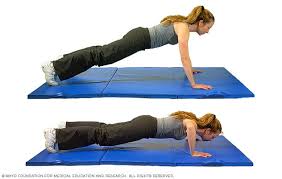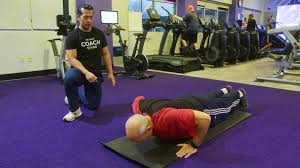The Taper: Why You Should Do It and How Long to Do It For
So you’ve been training hard for your upcoming half marathon. You’ve put in the long runs, the tempo runs, the speed work…you’re feeling good and you’re confident that you can PR. But there’s one last thing you need to do before race day, and that’s taper.
Tapering is often misunderstood; many runners think it means “doing nothing” in the weeks leading up to a race. But that couldn’t be further from the truth. Tapering is a strategic reduction in mileage (and sometimes intensity) in order to allow your body to recover from the hard training you’ve been doing and to peak on race day.
Done correctly, a taper can help you run your best race ever. Done incorrectly, and you might find yourself feeling sluggish and underprepared come race day. In this blog post, we’ll give you all the information you need to know about tapering for your half marathon, including how long to do it for and what types of workouts you should (and shouldn’t) be doing.
How Long Should You Taper For?
The length of your taper will depend on a few factors, including how long your training cycle was and how much volume you were doing leading up to your taper. As a general rule of thumb, most runners will taper for 2-3 weeks before a half marathon.
If your training cycle was 12 weeks or longer, you can probably get away with tapering for just 2 weeks. But if your training cycle was shorter than that (8-10 weeks), you might want to consider tapering for 3 weeks instead. This will give your body more time to recover and will help ensure that you’re feeling fresh come race day.
What Types of Workouts Should You Do During Your Taper?
During your taper, it’s important to continue doing some sort of workout 4-5 times per week. However, the focus should be on quality over quantity. This means that you should be doing shorter, easier workouts that are focused on maintaining your fitness rather than trying to improve it.
Some good workout options during your taper include easy runs, cross-training (such as swimming or cycling), and light strength-training sessions. Avoid anything that is too strenuous or that will leave you feeling exhausted; remember, the goal is to recover from all the hard training you’ve been doing so that you can feel fresh on race day.
The taper is an important part of any runner’s training plan leading up to a big race. By reducing your mileage and focusing on quality over quantity in your workouts, you can allow your body to recover from all the hard training you’ve been doing and ensure that you’re feeling fresh come race day. So how long should you taper for? Most runners will taper for 2-3 weeks before a half marathon. And what types of workouts should you do during your taper? Easy runs, cross-training, and light strength-training sessions are all good options. Just make sure to avoid anything that is too strenuous or that will leave you feeling exhausted. Follow these tips and you’ll be well on your way to running your best race ever!
How long before a half marathon should you taper? For half marathons, two weeks tapering is advisable. This will give your muscles a chance to recover and will help to reduce potential injuries, all to get your legs over the finish line. Your longest distance should be about two weeks before your race.
How do you taper off a half marathon? Taper for two weeks prior to your marathon or half marathon. During the taper, reduce total mileage by 50 percent and interval mileage by 33 percent. During the taper, as your legs get fresher, run your intervals slightly faster than earlier.
How much time should you take off between half marathons? Most athletes require an easy week after racing their half marathon and after two or three big races, the body often needs a break mentally, as well as physically. It’s sensible to leave roughly four weeks between half marathons if you race more than one seriously.
What is the hardest part of a half marathon? The middle miles in a half marathon can be the hardest miles of the race. The beginning of the race excitement has worn off, and you aren’t close enough to the finish line for the “almost done” excitement. For me, miles 7 through 10 of a half marathon typically make or break the race.
How long before a half marathon should you taper? – Additional Questions
What percentage of the population has run a half marathon?
While a record number of runners are completing 26.2- and 13.1-mile races, marathoners and half-marathoner still make up less than 1 percent of the American population.
What happens to your body when you run a half marathon?
Thankfully, injuries are uncommon in half marathon runners. But you might experience lower body issues, including shin splints, plantar fasciitis, or muscle pain to your calves, hamstrings, or quads. Muscle aches can be treated with rest and gentle stretching.
Is running a half marathon a big deal?
Signing up for your first half marathon is a big deal. 13.1 miles of grit, sweat and mental toughness. While it may be challenging at times the training and race itself is worth the glory of crossing that finish line.
What is a lot of elevation gain for a half marathon?
The half-marathon presents a deceptively challenging elevation profile. Runners can expect approximately 1,500′ feet of gain and 1,500′ of loss, the majority of which occurs in the first four miles of the race.
Is a half marathon impressive?
In fact, with enough time and consistent training, anyone can take on 13.1 miles. Running a half marathon is impressive – an undeniable statement that you are a runner. It tests your endurance, stamina, fitness, and pace.
Is sub 2 hours good for a half marathon?
What is a good time for intermediate half marathon runners? For experienced runners, completing the course within two hours is a popular goal, which equals an average pace of 9 minutes 9 seconds per mile.
Should you eat gels during half marathon?
The short answer is yes. Your body will be running low on stored glycogen after about 75 minutes on the course, so unless you’re extremely fast, you will definitely benefit from an energy gel (or chew, or bean) taken within the first hour.
What should you eat during a half marathon?
Granola bars and bananas are great pre-race foods. Avoid foods rich in fiber (including fruits with skins, such as apples and pears) to avoid bowel movements right before (and during) your run. Be sure to maintain your hydration in the morning with a combination of water and sports drinks.
Can you walk a half marathon in 3.5 hours?
On average though, a mile can be walked in about 15-20 minutes. Therefore walking a half-marathon will take an average of 3-4 hours depending on how fast you are walking per mile. You definitely can walk a half marathon in 3.5 hours which would be walking at a pace of 16 minutes per mile.
What is a good pace for a beginner half marathon?
On average we estimate, beginner males, finish half marathons between 2:05 to 2:15. On the other hand on average, beginner females clock in between 2:20 and 2:30. These times are based on a relatively flat and easy course, as you add elevation and difficulty to the course the average times will increase.
Is it OK to walk during half marathon?
Walkers are welcomed at most half-marathon races, which makes it a good distance to strive for. A half marathon is 13.1 miles or 21 kilometers long. It will take 3 to 4 hours to complete at a continuous, brisk walking pace.
How do I go from couch potato to half marathon?
The 7 Building Blocks Of Going From Your Couch To Half Marathon
- Walk First, Then Run. Worried about your current running abilities?
- Get The Right Gear.
- Focus On Form and Miles, not Speed.
- In It For The Long Runs.
- Prioritize Your R&R.
- Fuel Like An Athlete.
- Peak, Then Taper.
Can you run a half marathon without training?
Running a half marathon with no training and running experience. Some people do it- they decide to try a half marathon as their first race without any prior training. It is possible to do it but it might be kind of tough on your body and even mentally. If you like challenges- go for it!
Can you go from couch to half marathon in 12 weeks?
Absolutely. As long as you have some running ability, it’s entirely possible to get ready to cover 13.1 miles in 12 weeks. 12 weeks is about right for most people; it’s enough time to allow you to gradually increase your mileage without overdoing it.
Can a complete beginner run a half marathon?
Beginners who decide to challenge themselves with a half-marathon have to get a lot right. Firstly, they have to develop the endurance to run 13.1 miles (without overdoing it and getting injured). Then there’s the speed part of the equation: developing the strength, physically and mentally, to hit your time goals.
How much should you run the week before a half marathon?
Training the Week Before
Your longest mileage day a week before a marathon should be 8 to 10 miles. For a half marathon, it should be 6 to 8 miles. During the week before your marathon or half marathon, continue to get in shorter fitness walks or runs of 30 to 60 minutes, each day or every other day.
How many miles a week should I run for a half marathon?
For the Half Marathon
The typical weekly mileage for average runners training for a half marathon is 30-40 miles a week. Elite runners will have a volume closer to 100-110 miles per week.




